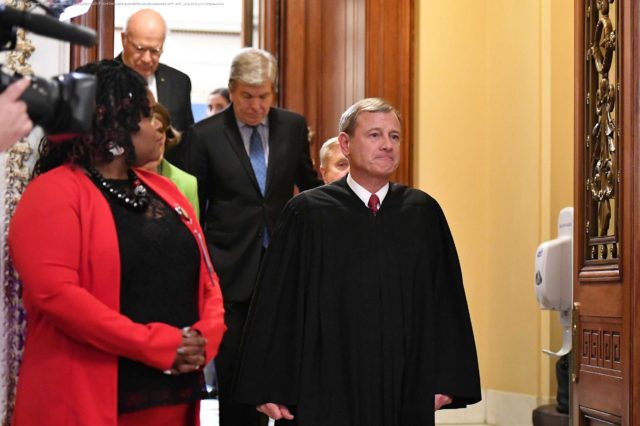When the Supreme Court opened its 2019 term nine months ago with a debate about the meaning of insanity, few could have predicted how crazy …
When the Supreme Court opened its 2019 term nine months ago with a debate about the meaning of insanity, few could have predicted how crazy things would get.
The chief justice presiding over a president’s Senate impeachment trial. A viral pandemic forcing the first postponement of oral arguments in a century. The oldest justice questioning lawyers from her hospital bed. The quietest justice speaking up daily. Opinions being released into July for the first time since 1996.
By the end of the term Thursday, the customarily conservative court had issued a series of decisions on gay and transgender rights, the DACA program, abortion rights and President Trump’s lack of immunity from criminal investigation that produced the loudest cheers from liberals.
The lesson from the court seemed to be that while the president, the Democratic House and the Republican Senate are predictable, a court of nine is harder to pin down.
„The court’s a lot more complicated than a lot of observers give it credit for,“ said former U. S. solicitor general Paul Clement, perhaps the premier Supreme Court advocate of his generation with more than 100 oral arguments under his belt.
That unpredictability is largely the work of Chief Justice John Roberts, who at 65 with 15 years leading the court has become a hugely influential figure in American life. With four justices on the left and four others on the right, Roberts usually determines the result in the court’s most contentious cases. In 62 cases this term, he was in the majority 60 times.
These are the most important decisions before the Supreme Court this year.
Thus it was that in two of the most closely watched cases – Trump’s effort to end the DACA program that protects 650,000 young, undocumented immigrants from possible deportation, and Louisiana’s effort to impose new restrictions on abortion clinics – Roberts threw in with the court’s liberals in 5-4 rulings.
„Those are very tenuous victories,“ warned Elizabeth Wydra, president of the liberal Constitutional Accountability Center, which files legal briefs in major high court cases. The administration can try again to eliminate DACA, and more abortion restrictions are working their way through lower courts.
More „remarkable and welcome,“ Wydra said, was the court’s 6-3 opinion giving the nation’s LGBTQ population employment protection under sex discrimination laws – a ruling written by Associate Justice Neil Gorsuch, Trump’s first nominee. Roberts and the court’s four liberal justices were his silent partners.
While those cases focused unlikely attention on the court, it has come down in Trump’s favor more often. The five conservative justices have voted as a bloc nine times in 5-4 cases. Among them: Enabling states to extend private school scholarships to religious schools and giving the president authority to fire the Consumer Financial Protection Board’s director without cause. Both rulings were written by Roberts.
„All chief justices have outsized influence because they are the most senior on the bench and, among other things, dominate the assignment of opinions,“ said Harvard Law School professor Richard Lazarus, a classmate of Roberts there in the 1970s and author of „The Rule of Five,“ a new book on the high court and climate change. „But few possess both that seniority and sit on a closely divided court in which they tend to be at the center of the spectrum.
Start
United States
USA — Art Year of surprise Supreme Court rulings shows influence of powerful chief justice...






